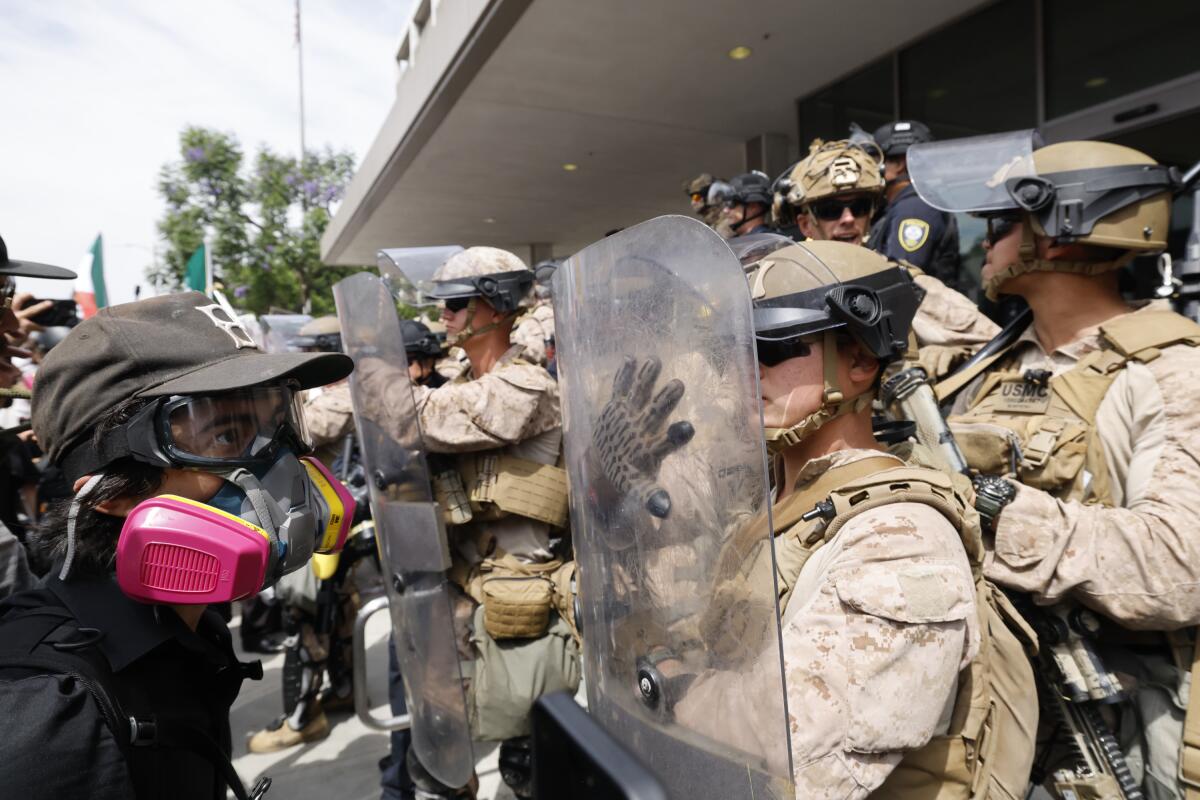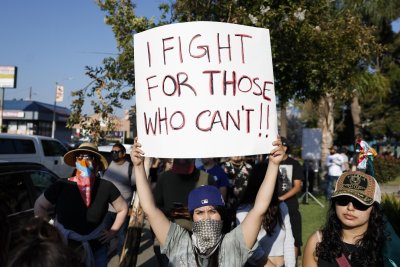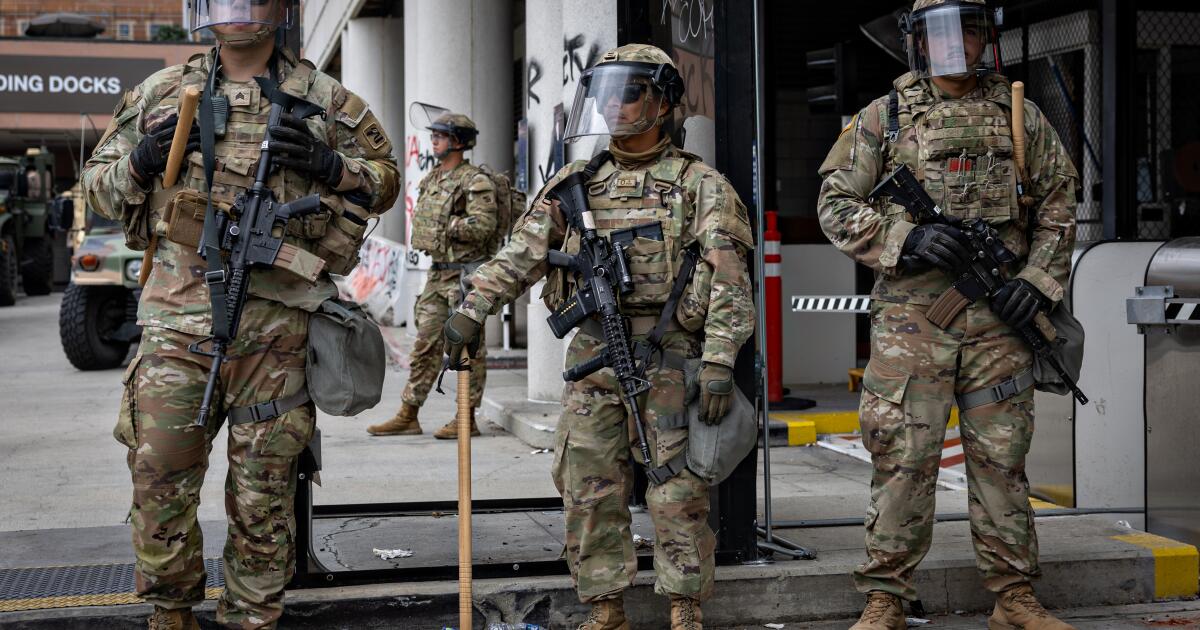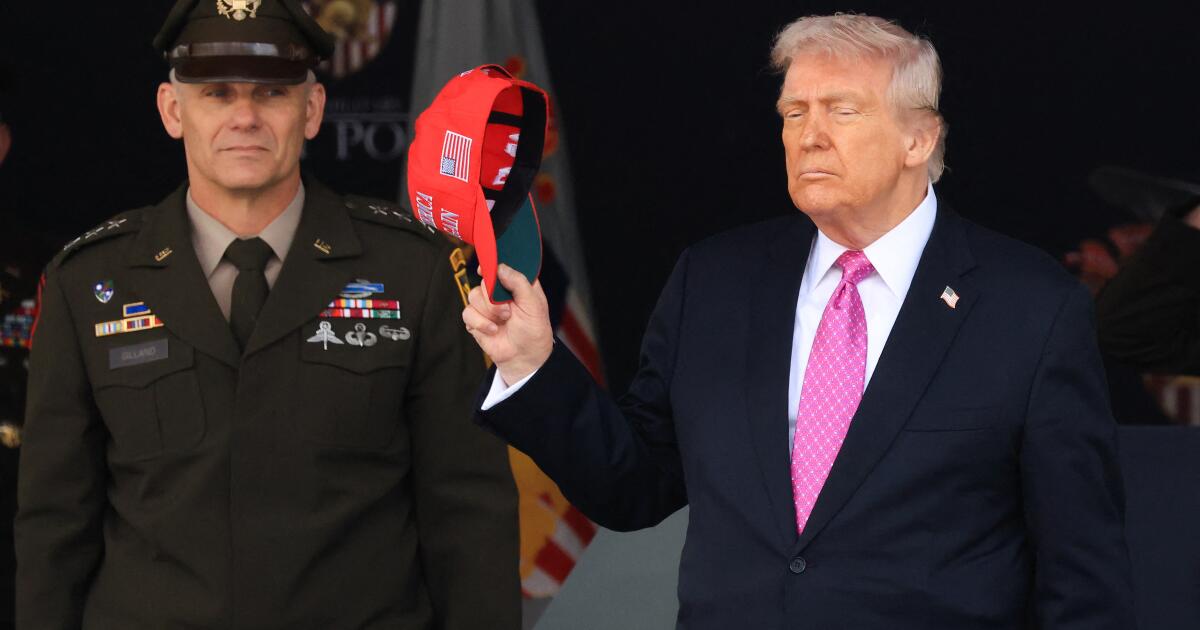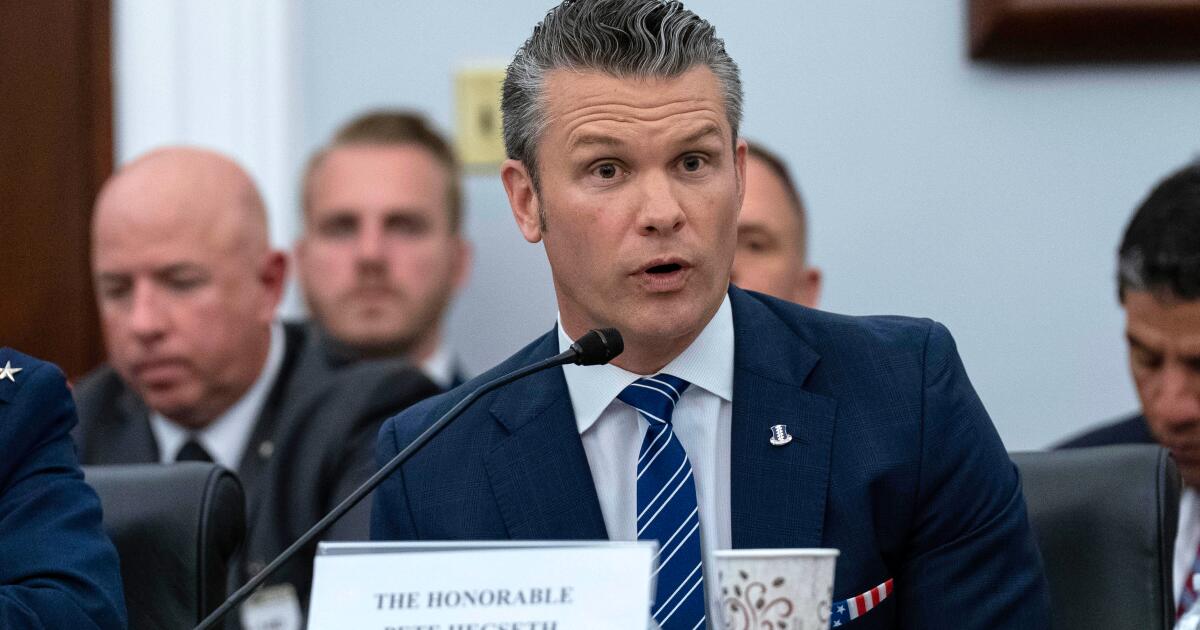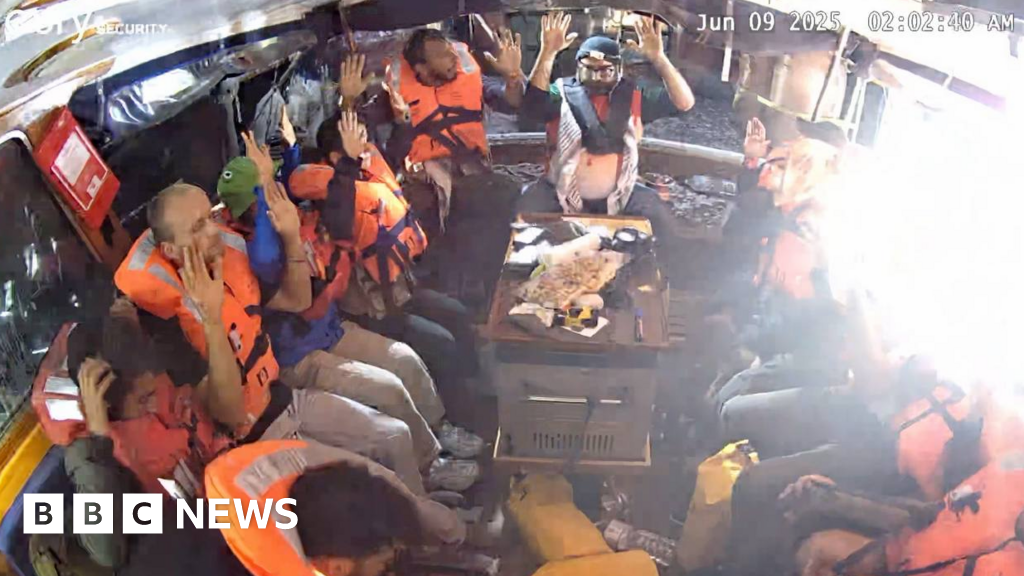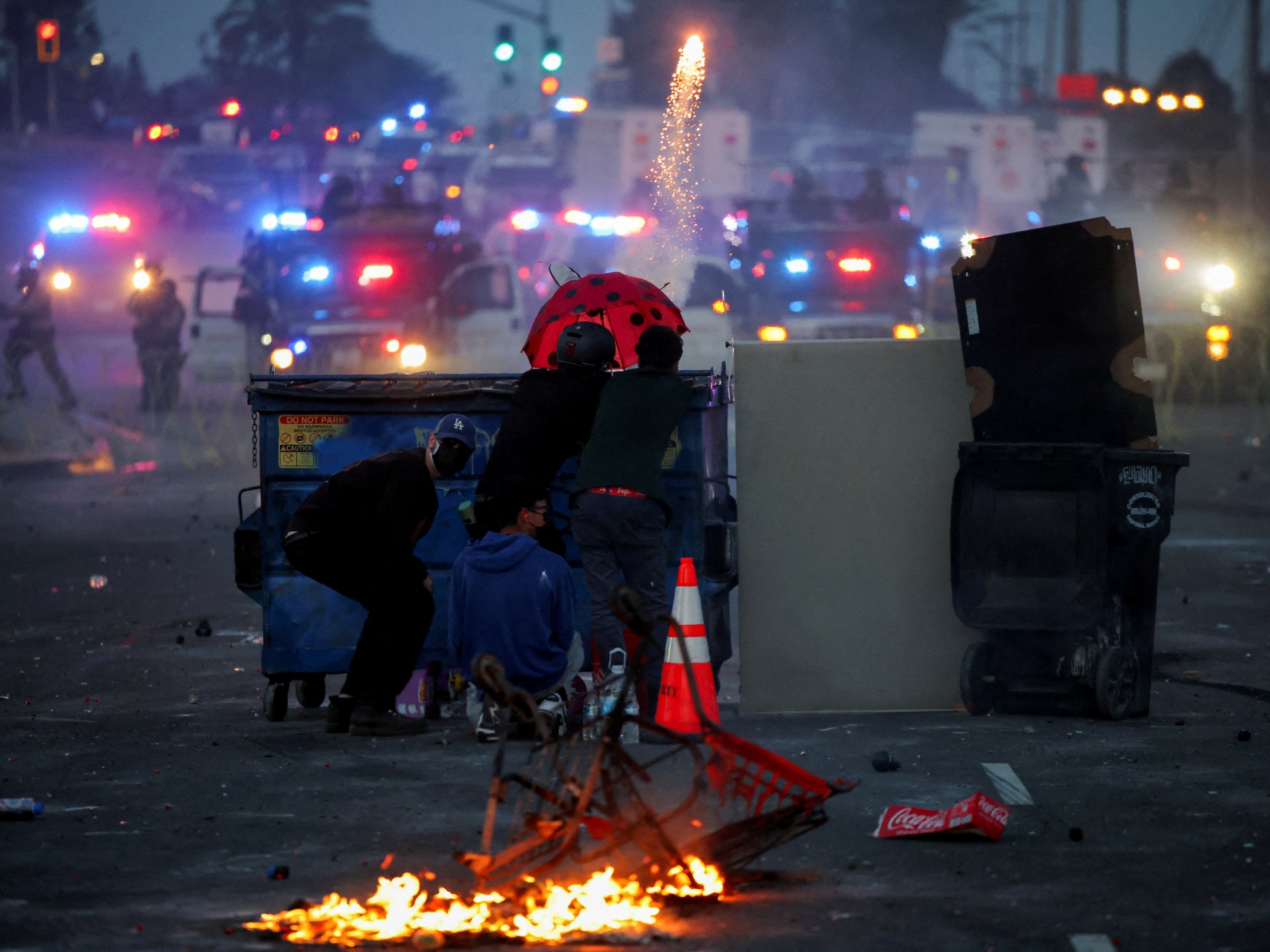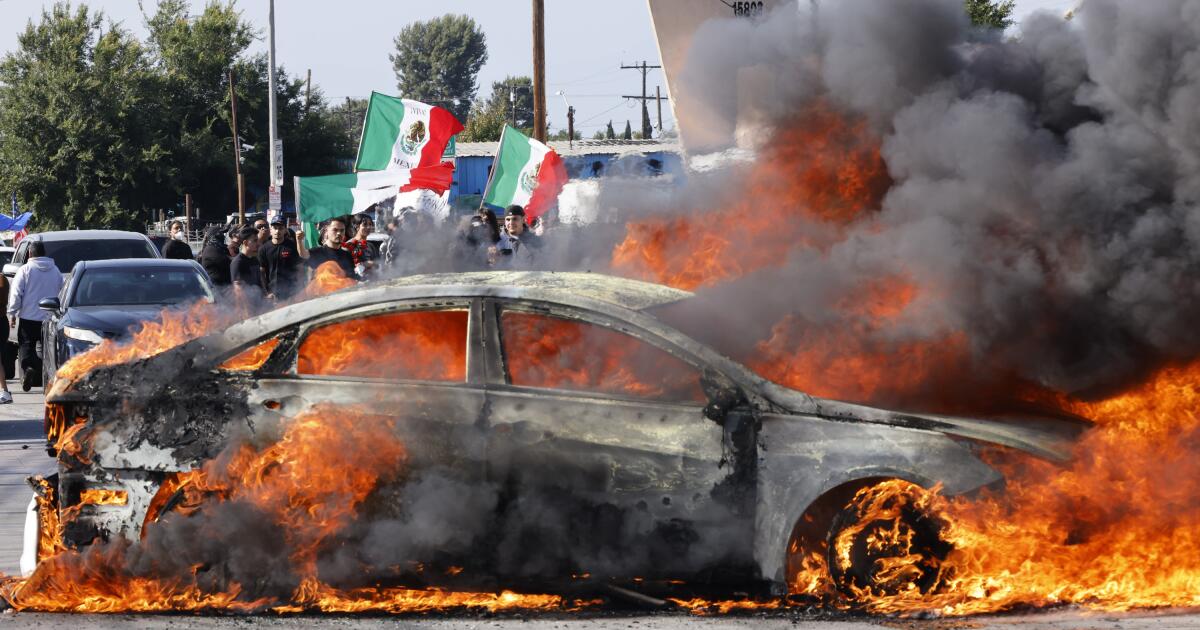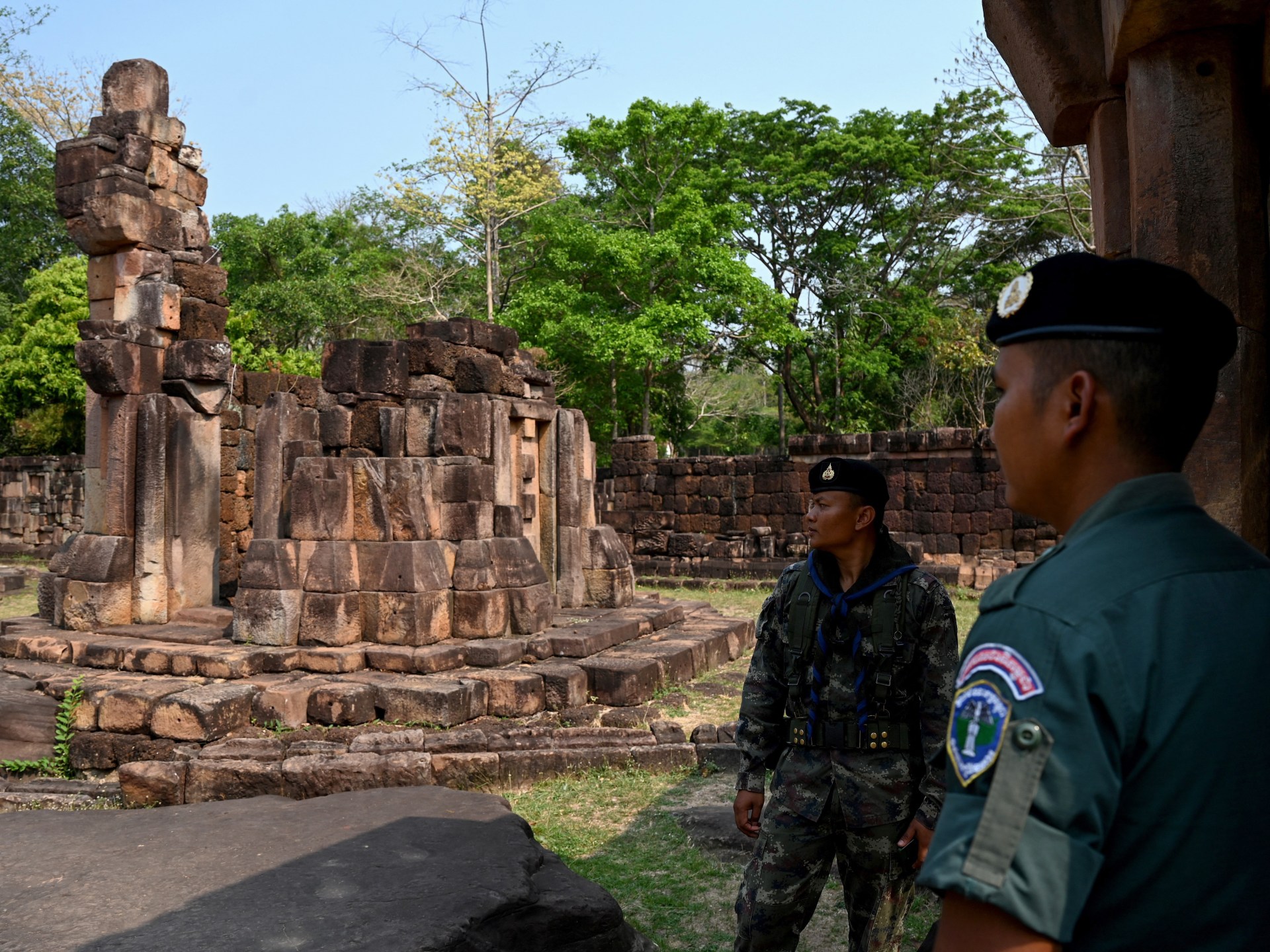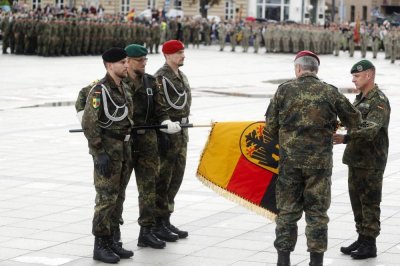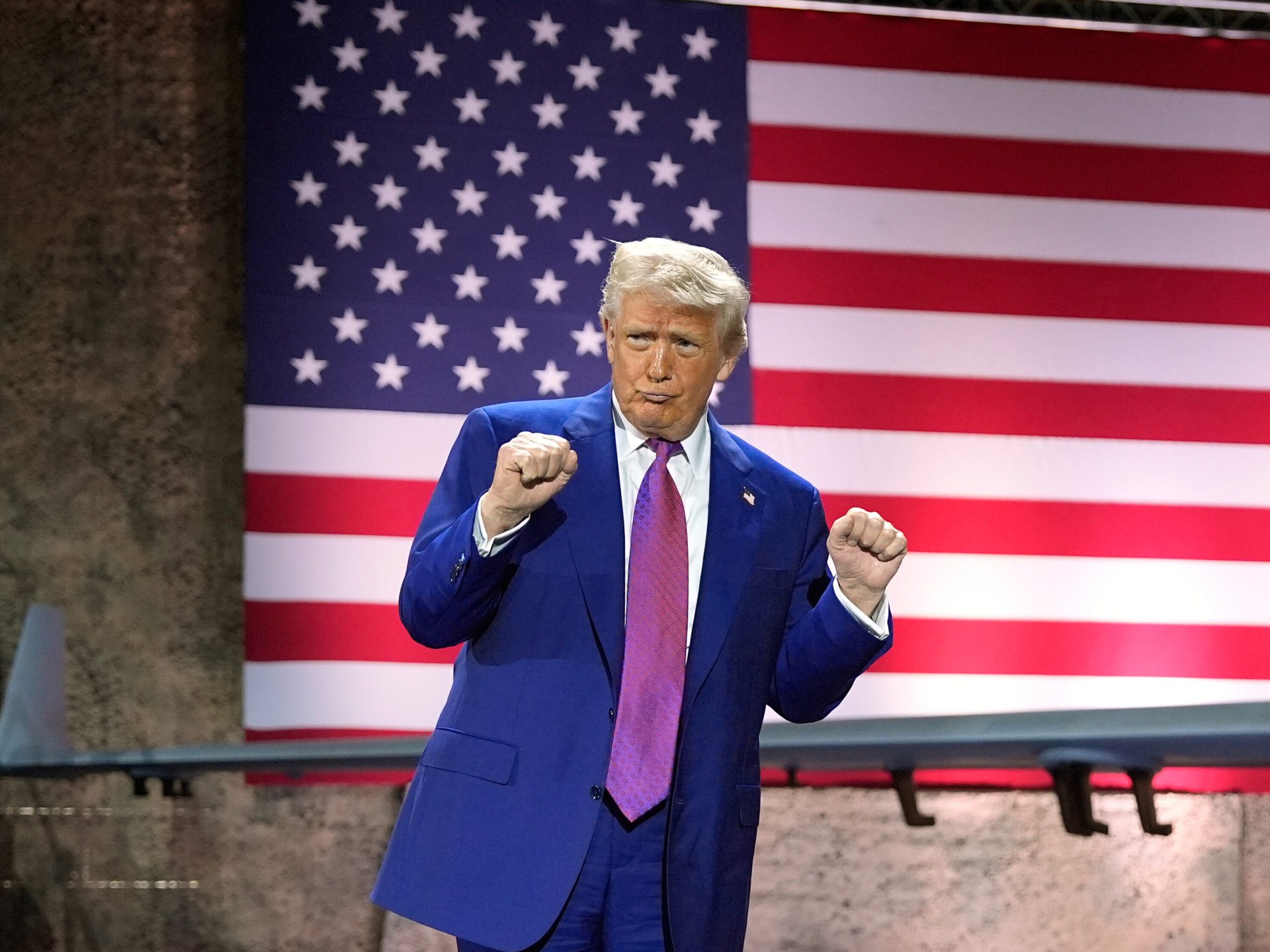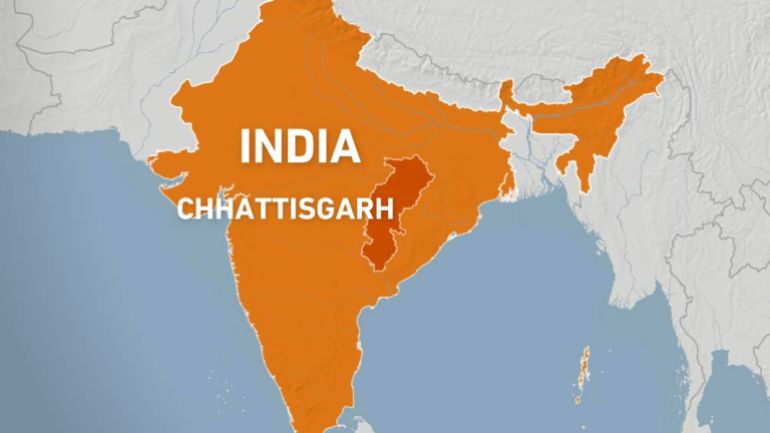9th Circuit weighs Trump’s case for deploying troops to L.A.
The 9th Circuit Court of Appeals heard arguments Tuesday questioning both President Trump’s decision to deploy federal troops to Los Angeles and the court’s right to review it, teeing up what is likely to be a fierce new challenge to presidential power in the U.S. Supreme Court.
A panel of three judges — two appointed by President Trump, one by President Biden — pressed hard on the administration’s central assertion that the president had nearly unlimited discretion to deploy the military on American streets.
But they also appeared to cast doubt on last week’s ruling from a federal judge in San Francisco that control of the National Guard must immediately return to California authorities. A pause on that decision remains in effect while the judges deliberate, with a decision expected as soon as this week.
“The crucial question … is whether the judges seem inclined to accept Trump’s argument that he alone gets to decide if the statutory requirements for nationalizing the California national guard are met,” said Erwin Chemerinsky, dean of the UC Berkeley School of Law.
The questions at the heart of the case test the limits of presidential authority, which the U.S. Supreme Court has vastly expanded in recent years.
When one of the Trump appointees, Judge Mark J. Bennett of Honolulu, asked if a president could call up the National Guard in all 50 states and the District of Columbia in response to unrest in California and be confident that decision was “entirely unreviewable” by the courts, Assistant Atty. Gen. Brett Shumate replied unequivocally: “Yes.”
“That couldn’t be any more clear,” Shumate said. “The president gets to decide how many forces are necessary to quell rebellion and execute federal laws.”
“It’s not for the court to abuse its authority just because there may be hypothetical cases in the future where the president might have abused his authority,” he added.
California Deputy Solicitor General Samuel Harbourt said that interpretation was dangerously broad and risked harm to American democratic norms if upheld.
“We don’t have a problem with according the president some level of appropriate deference,” Harbourt said. “The problem … is that there’s really nothing to defer to here.”
The Trump administration said it deployed troops to L.A. to ensure immigration enforcement agents could make arrests and conduct deportations, arguing demonstrations downtown against that activity amounted to “rebellion against the authority of the Government of the United States.”
State and local officials said the move was unjustified and nakedly political — an assessment shared by Senior District Judge Charles R. Breyer, whose ruling last week would have handed control of most troops back to California leaders.
Breyer heard the challenge in California’s Northern District, but saw his decision appealed and put on hold within hours by the 9th Circuit.
The appellate court’s stay left the Trump administration in command of thousands of National Guard troops and hundreds of Marines in L.A. through the weekend, when demonstrators flooded streets as part of the nationwide “No Kings” protests.
The events were largely peaceful, with just more than three dozen demonstrators arrested in L.A. Saturday and none on Sunday — compared to more than 500 taken into custody during the unrest of the previous week.
Hundreds of Marines still stationed in L.A.”will provide logistical support” processing ICE detainees, Pentagon spokesman Sean Parnell said in a statement Tuesday. Under last week’s executive order, National Guard troops will remain deployed for 60 days.
Arguing before the appellate panel Tuesday, Shumate said the military presence was necessary to defend against ongoing “mob violence” in L.A. streets.
“Federal personnel in Los Angeles continue to face sustained mob violence in Los Angeles,” the administration’s lawyer said. “Unfortunately, local authorities are either unable or unwilling to protect federal personnel and property.”
Harbourt struck back at those claims.
“[Violence] is of profound concern to the leaders of the state,” the California deputy solicitor general said. “But the state is dealing with it.”
However, the three judges seemed less interested in the facts on the ground in Los Angeles than in the legal question of who gets to decide how to respond.
“In the normal course, the level of resistance encountered by federal law enforcement officers is not zero, right?” Judge Eric D. Miller of Seattle asked. “So does that mean … you could invoke this whenever?”
While the appellate court weighed those arguments, California officials sought to bolster the state’s case in district court in filings Monday and early Tuesday.
“The actions of the President and the Secretary of Defense amount to an unprecedented and dangerous assertion of executive power,” California Atty. Gen. Rob Bonta wrote in a motion for a preliminary injunction.
Marines push back anti-ICE protesters in front of the Federal Building during “No Kings Day” in Downtown on Saturday.
(Carlin Stiehl/Los Angeles Times)
“The President asserts that [the law] authorizes him to federalize State National Guard units and deploy armed soldiers into the streets of American cities and towns whenever he perceives ‘opposition’ or ‘disobedience of a legal command,’” the motion continued. “He then asserts that no court can review that decision, assigning himself virtually unchecked power.”
The president boasted he would “liberate Los Angeles,” during a speech to troops at Fort Bragg last week.
In court, Bonta called the deployment a “military occupation of the nation’s second-largest city.”
Los Angeles officials also weighed in, saying in an amicus brief filed Monday by the City Attorney’s office that the military deployment “complicates” efforts to keep Angelenos safe.
“The domestic use of the military is corrosive,” the brief said. “Every day that this deployment continues sows fear among City residents, erodes their trust in the City, and escalates the conflicts they have with local law enforcement.”
The appellate court largely sidestepped that question, though Bennett and Judge Jennifer Sung in Portland appeared moved by Harbourt’s argument that keeping guard troops in L.A. kept them from other critical duties, including fighting wildfires.
“The judges were sensitive to that, and so if they’re ultimately going to land on a ‘no’ for the troops, they’ll do it sooner rather than later,” said professor Carl Tobias of the University of Richmond. “If they’re persuaded I think they’ll move fast.”
With the issue all but certain to face further litigation and a fast-track to the Supreme Court, observers said the 9th Circuit’s decision will influence how the next set of judges interpret the case — a process that could drag on for months.
“Both sides seem in a hurry to have a decision, but all [the Supreme Court] can do this late in the term is hear an emergency appeal,” Tobias said. “Any full-dress ruling would likely not come until the next term.”
